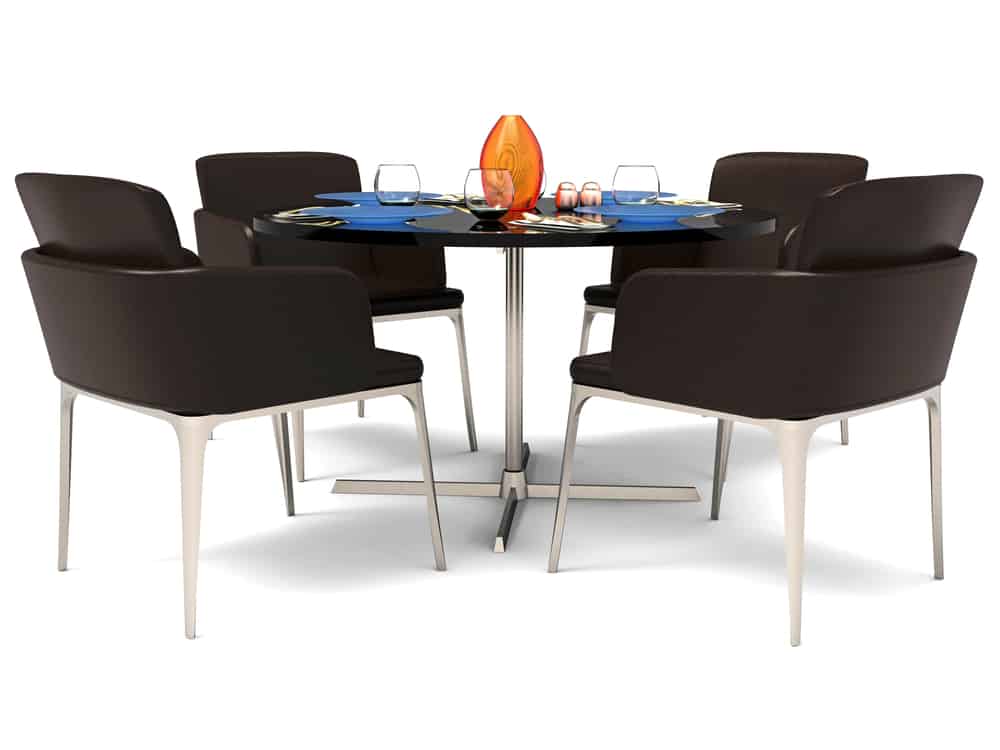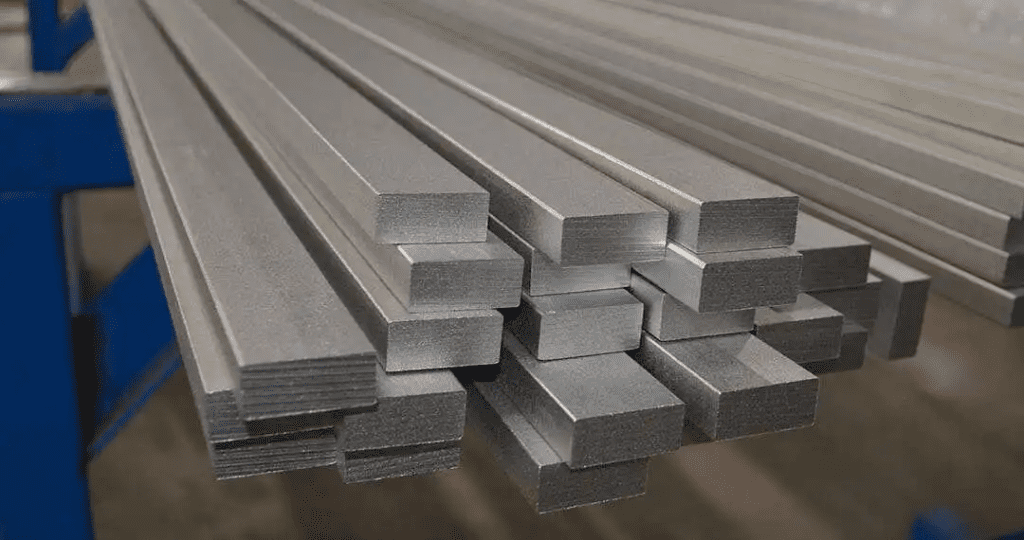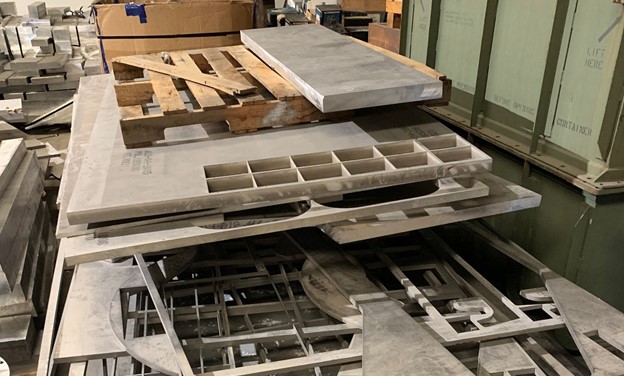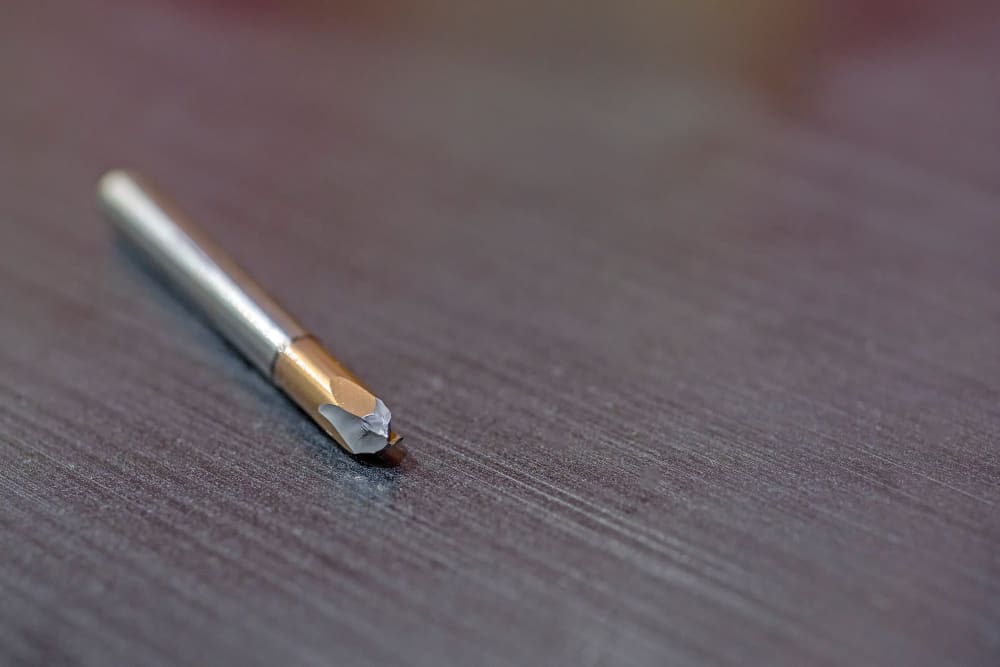 Titanium is strong, lightweight, and corrosion-resistant and is the most familiar of the high specification metals. To most people, titanium is synonymous with high-quality, and American automaker Ford Motor Company called its top trim level Titanium for several years due to this perception. Titanium derives its value from how it’s carefully refined, alloyed, and treated to lend its properties for use in exacting roles like jet engine components. Because of this, titanium is known as an expensive metal. Machine shops and furniture crafters can save money by purchasing recycled remnants remaining from production that are resold at cheaper prices than new titanium sold directly from the mill.
Titanium is strong, lightweight, and corrosion-resistant and is the most familiar of the high specification metals. To most people, titanium is synonymous with high-quality, and American automaker Ford Motor Company called its top trim level Titanium for several years due to this perception. Titanium derives its value from how it’s carefully refined, alloyed, and treated to lend its properties for use in exacting roles like jet engine components. Because of this, titanium is known as an expensive metal. Machine shops and furniture crafters can save money by purchasing recycled remnants remaining from production that are resold at cheaper prices than new titanium sold directly from the mill.
However, recycled titanium that isn’t verified before reselling can present a problem for many industries. Aerospace manufacturers cannot use titanium in jet engines unless they know exactly what titanium grade it is and how it has been treated. This often isn’t a guarantee when it comes to remnant titanium for sale, although sometimes the alloys can be identified through scrap metal analysis and testing.
This leaves significant amounts of titanium available for use in a variety of ways, such as machining custom bicycle and automotive parts. Titanium’s strength profile wildly exceeds what is needed in these roles, and the weight savings offer a significant performance boost. One of the most unexpected uses of remnant titanium, however, is the creation of high-strength custom titanium furniture.
The Advantages of Titanium Furniture
Titanium derives its reputation and value from its high strength-to-density ratio. This is valuable when using it to craft furniture. In the hands of a master craftsman, this strength can conceivably lead to delicate furniture design using a framework of very strong titanium. Titanium offers high corrosion resistance, and deck furniture made from titanium could indefinitely be left outside in the elements without receiving structural damage. However, the real advantage of using titanium furniture may lie in the metal’s long-term resistance to wear and tear.
Aging furniture grows increasingly wobbly over time. This is due to factors such as gradual wood shrinking and distorting as well as the bending of brackets made with steel or aluminum and the stripping of fasteners with daily use. This need not be the case with titanium furniture. The modulus of elasticity of titanium is half that of steel, and titanium can flex much further than steel for a much greater length of time without permanent distortion. As long as the titanium is worked correctly, it has an extraordinary level of resilience when used in furniture whose structure effectively never wears out. However, working the metal into a usable form is one of the biggest challenges in creating titanium furniture.
The Challenges of Working Titanium
Contrary to popular conception, titanium isn’t rare—it’s the fourth most abundant metal on Earth. However, titanium readily bonds with atmospheric oxygen and nitrogen, and it is seldom found in its metallic state. This tendency to bond freely with the atmosphere, among other challenges, can make titanium difficult to work with.
To prevent this bonding, titanium needs to be welded with an inert gas that protects the metal, typically argon. Titanium isn’t alone in this need. Other nonferrous metals like aluminum also require the use of shielding gas to protect the molten metal. Titanium is an outlier that requires an extreme level of coverage, however. Argon gas needs to cover both the front and back of any welds. Without this coverage, the titanium will bond with nitrogen and carbon, creating nitrides and carbides. These are extremely hard but brittle materials that break easily, and improperly welded titanium furniture will crack rather quickly.
While titanium is machinable, it isn’t easily machinable. In addition to issues with welding, titanium’s unique properties mean that mechanical manipulation such as cutting, machining, or drilling is likely to encounter the following challenges:

- Wear: Titanium’s high strength-to-weight ratio can translate to heavy wear on bits, cutting wheels, and other tools. Titanium furniture components either need to be cut and machined with special high-strength metals, or the builder needs to be prepared to use up several tools.
- Heat: A unique attribute of titanium compared to other metals is that it doesn’t conduct heat or electricity very well. When drilling or cutting titanium using mechanical means, heat can build to the point where it compromises the integrity of tools or damages the titanium.
- Chattering: Because of titanium’s flexibility there can be a significant amount of play beneath a drill bit, saw, or another tool. This play results in a bouncing effect where the titanium rapidly comes into and out of contact with the tool. This can result in crooked holes for fasteners, cuts that aren’t straight, and scalloped surfaces that were meant to be machined smooth.
These challenges can be met with care and caution. Tool wear and heat build-up can effectively be dealt with by working slowly and ensuring that bits and tools are frequently lubricated. Similarly, chattering can be prevented in most operations by taking the time to ensure the workpiece is sufficiently clamped into place. Because of titanium’s properties, however, it may take significantly more clamps than expected to prevent chattering. These issues are manageable, though. Perhaps the biggest challenge of working titanium is ensuring that the titanium remnant is both affordable and high-quality.
|
Buy Certified High-Quality Metals for Industrial Solutions |
||
|
New Aluminum |
New Steel |
New Stainless Steel |
 |
 |
 |
| Reliable supply: Consistent, certified aluminum stock you can trust. High-quality material: Superior-grade aluminum for precision needs. Custom cuts: Accurate cuts down to thousandths of an inch. |
Durability and strength: Reliable for projects needing long-lasting, tough materials. Cost-effective: Quality steel that offers strength without breaking the bank. Custom cutting: Precise cuts tailored to exact needs with top-tier cutting tools. |
Sustainability: Highly eco-friendly as the most recyclable metal on earth. High durability: Resistant to corrosion and wear, ensuring long-lasting performance. Custom precision cuts: Tailored to your specifications with quick, accurate results. |
Finding Remnant Metal for Titanium Furniture
 New titanium is prohibitively expensive for building titanium furniture. Not only is the cost of titanium very high, but it also has to be ordered in bulk. However, those same factors lead to a bounty of reasonably priced titanium remaining from manufacturers that have to order new titanium straight from the mill to meet their industry’s quality and safety standards. This remnant titanium is ideal for building titanium furniture.
New titanium is prohibitively expensive for building titanium furniture. Not only is the cost of titanium very high, but it also has to be ordered in bulk. However, those same factors lead to a bounty of reasonably priced titanium remaining from manufacturers that have to order new titanium straight from the mill to meet their industry’s quality and safety standards. This remnant titanium is ideal for building titanium furniture.
Industrial Metal Service buys and recycles titanium remnants from manufacturers that have no further use for them and resells them at discounted prices. This makes it cheaper and more economic for furniture crafters who don’t need to buy new titanium in bulk.
Purchase Titanium Remnants for Furniture Crafting from a Local Metal Supplier
Call us today to discuss your titanium remnant requirements. We look forward to working with you.
 Angle
Angle Cast Plate
Cast Plate Diamond Plate
Diamond Plate Flat Bar
Flat Bar Plate
Plate Round Bar
Round Bar Square Bar
Square Bar Square Tubing
Square Tubing Round Tubing
Round Tubing Angle
Angle Channel
Channel Diamond Plate
Diamond Plate I Beam
I Beam Round Bar
Round Bar Sheet
Sheet Square tubing
Square tubing Round Tubing
Round Tubing Rectangular Tubing
Rectangular Tubing Plate
Plate Rectangular Bar
Rectangular Bar Rectangular Tubing
Rectangular Tubing Round Bar
Round Bar Sheet
Sheet Square Bar
Square Bar Square Tubing
Square Tubing
